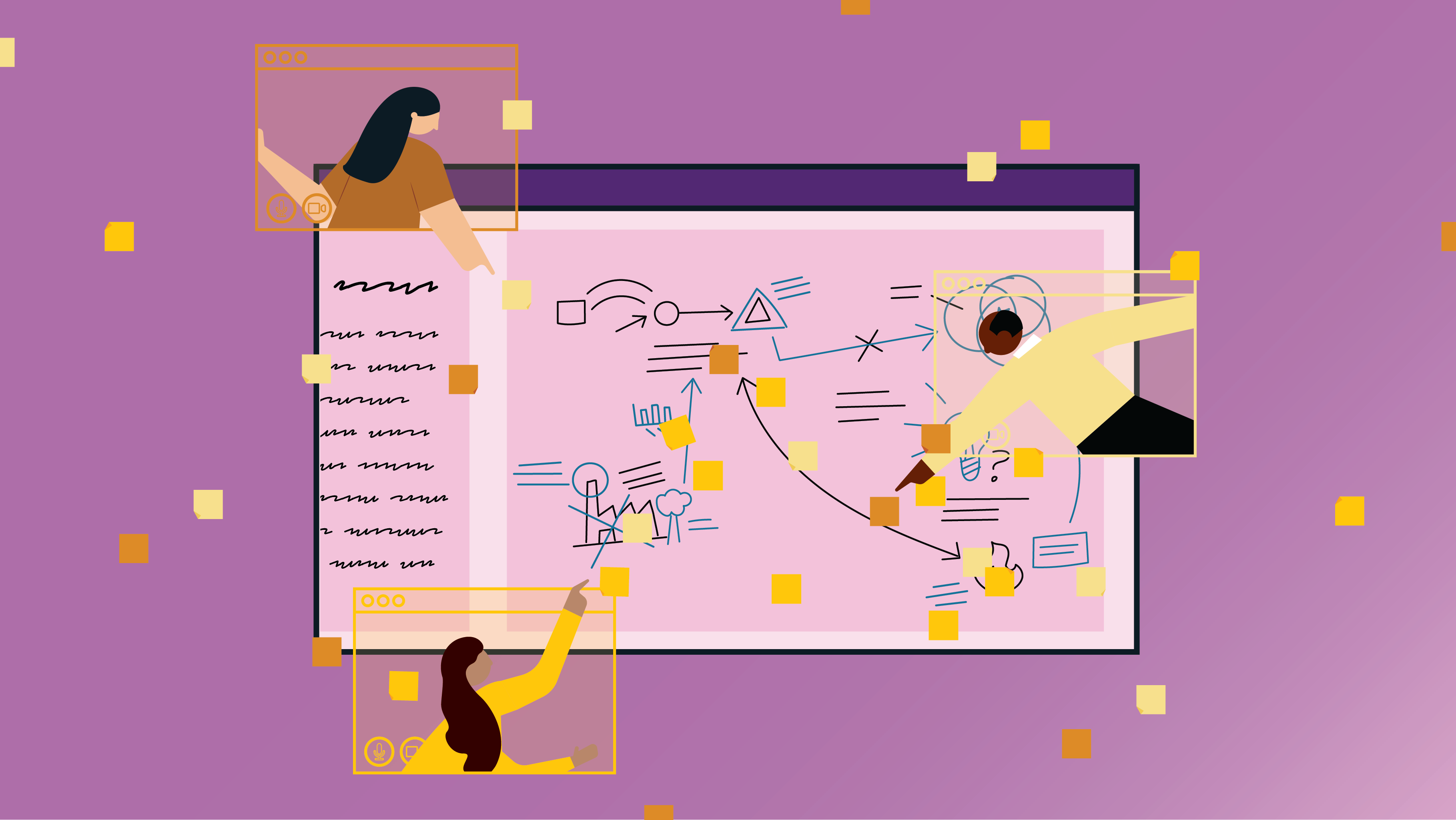Interested in virtual collaboration using digital whiteboards but feeling overwhelmed by needing to integrate yet another tool into your repertoire? Learn to set up accessible, purposeful, and adaptable whiteboards for more deliberate collaboration.
This blog post introduces a topic covered in our NEW course, Beyond the Board. For more information, check out the course page or download the course syllabus.
According to Microsoft, the average workday has become about 13% (that’s one hour) longer since March 2020, and after-hours work has increased by twice that amount.
Why is this?
“People have 250% more meetings every day than they did before the pandemic,” says Mary Czerwinski, research manager at Microsoft.1
We’re spending more time in meetings, and investing more on productivity and collaboration tools, but in the end are feeling that less and less is getting done. At the same time, we’re facing sky-high expectations to deliver more flexible, tailored, and engaging experiences that serve the unique needs of our teams and clients.
Reimagining Collaboration
Clearly the answer is not more meetings or more tools. Instead, we’re in dire need of reimagining the way we meet for deliberate and purposeful collaboration.
Under pressure to get more done with our teams and clients, it can be challenging to sift through the proliferation of tools, frameworks, and best-in-class content for virtual collaboration.
To meet the demands of the hour, XPLANE has employed the digital whiteboard as a critical tool for designing vibrant and versatile collaborative workspaces.
Best Practices for Virtual and Hybrid Collaboration
Over the last several years, we’ve set up hundreds of digital whiteboards for a variety of projects—from client workspaces to workshops—and all types of groups, from teams of 5 to 100 or more.
In the process, we’ve developed several best practices to help teams and organizations adopt a more intentional approach to virtual and hybrid collaboration:
- Designing for context: What information needs to be shared when? What work can be done synchronously (meetings), asynchronously (email, document review, boards), and anything in between? What practices are set up for the team to align on ideas, make decisions, and end the spin cycle in order to push work forward?
- Creating accessible, welcoming, and inclusive boards
- Understanding the “audience” (that is, the people involved) and their goals to create boards that serve their needs
- Quickly editing and adapting digital whiteboard templates to specific needs
- Creating systems and libraries of frameworks to quickly set up boards that can be easily reused and scaled up or down as needed
- Refining virtual workspaces after testing and learning from collaborators
A Hands-On Learning Experience for Busy Professionals
For a deeper dive into these best practices and how to put pieces of a (MURAL) board together for your team, don’t miss our latest course, Beyond the Board.
What will I learn in the Beyond the Board course?
During this three-day course, you will learn to:
- Develop a critical eye and make confident decisions when setting up boards
- Establish purpose and outcomes for meetings and workshops to drive board design
- Explore MURAL templates and use a structured process to build effective, scalable boards
- Create a custom workshop board and gradually increase the fidelity of it
- Experiment with options to make your boards more accessible and easily adaptable
- Test and ensure your board is functional, adaptable, and delightful to participants
- Share board creations with fellow learners
Who should attend the Beyond the Board course?
Engaging for anyone who wants to create a compelling narrative—from school administrators to freelancers to business executives—this course is particularly effective for:
- Consultants needing to provide consistent, engaging experiences with clients
- Managers building systems for their teams to work efficiently
What will I take away from the course?
At the end of the course, you will leave with:
- A planning activity template to think through the experience of a board
- A personalized digital board you can use immediately
- Access to a growing library of templates created by your class cohort and future Beyond the Board learners
Download the course syllabus for a full description of learning objectives and course details.
How do I enroll?
Spring 2022 enrollment is now open! And to learn more today, head to our Beyond the Board course page.
1 Derek Thompson. “This is What Happens When There Are Too Many Meetings.” The Atlantic. April 4, 2022. Found at: The Rise of the 9 p.m. Work Hour – The Atlantic.
Additional Resources
To learn more about making the most of virtual collaboration, check out the following resources:
